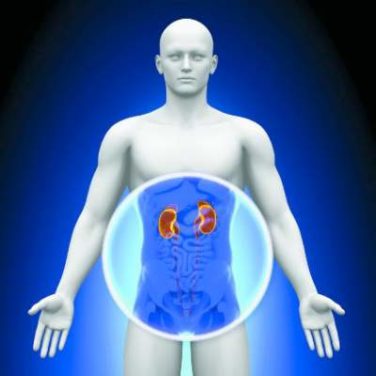AT DDW 2016
SAN DIEGO (FRONTLINE MEDICAL NEWS) – The tetracyclic antidepressant mirtazapine significantly improved indicators of functional dyspepsia and psychological distress in a single-center, randomized, placebo-controlled, double-blinded trial of 116 adults.
After 3 months of treatment, the mirtazapine group had significantly less nausea, early satiety, depression, somatization, hostility, and phobic anxiety, compared with the control group (all P values < .05), Dr. Yaoyao Gong reported at the annual Digestive Disease Week. Most patients began improving after 1-2 weeks of mirtazapine therapy, she added.
“We assume that mirtazapine might improve functional dyspepsia by improving depression and anxiety, reducing visceral sensitivity, and through its prokinetic effects on gastrointestinal transit,” said Dr. Gong, who is at the gastroenterology department of Nanjing Medical University, China.
Mirtazapine is a presynaptic alpha-2 antagonist that also blocks the 5-HT2a, 5-HT2c, 5-HT3, and H-1 receptors. This atypical antidepressant reduced visceral hypersensitivity and increased gastric accommodation, gastric emptying, and colonic transit time in animal studies, and improved weight loss, early satiety, and nausea in a recent U.S. placebo-controlled pilot trial ( Clin Gastroenterol Hepatol. 2016 Mar;14[3]:385-92 ).
As a biopsychosocial disorder, functional dyspepsia involves both physical and psychological symptoms, Dr. Gong noted. To explore how mirtazapine affects both realms, she and her associates randomized outpatients meeting Rome III functional dyspepsia criteria who also been diagnosed by a psychiatrist with anxiety, depression, or somatization disorder to receive either mirtazapine, 15 mg per day (61 patients) or placebo (55 patients). Both groups also received omeprazole, 30 mg per day, and mosapride, 5 mg three times a day. Patients were mostly in their early 40s, none was taking SSRIs or MAOIs, they had no history of abdominal surgery or upper endoscopy lesions, and they had negative 13C urea breath tests for Helicobacter pylori infection.
After 3 months of treatment, mirtazapine was associated with significantly lower 7-point Likert scales for nausea and early satiety, compared with standard care alone, said Dr. Gong. Mirtazapine did not significantly improve the other Rome III criteria for functional dyspepsia, but general overall score was significantly lower than for the control group.
In addition, the mirtazapine group had a “markedly better” average Symptom Checklist (SCL)-90 score, compared with the control group, and individual measures of depression, somatization, hostility, and phobic anxiety also were significantly lower than for controls (P < .05).
Mirtazapine did not significantly affect overall anxiety, a frequent psychological feature of functional dyspepsia. Mirtazapine was most often associated with dry mouth, although the researchers did not measure weight gain, another common adverse effect of the medication.
None of the patients stopped treatment because of adverse effects. The study group was too small to look at the separate effects of mirtazapine on epigastric pain and postprandial distress syndrome, Dr. Gong noted.
“We plan to assess these patients again after 12 months of treatment,” she said.
Dr. Gong did not report funding sources and had no disclosures.






